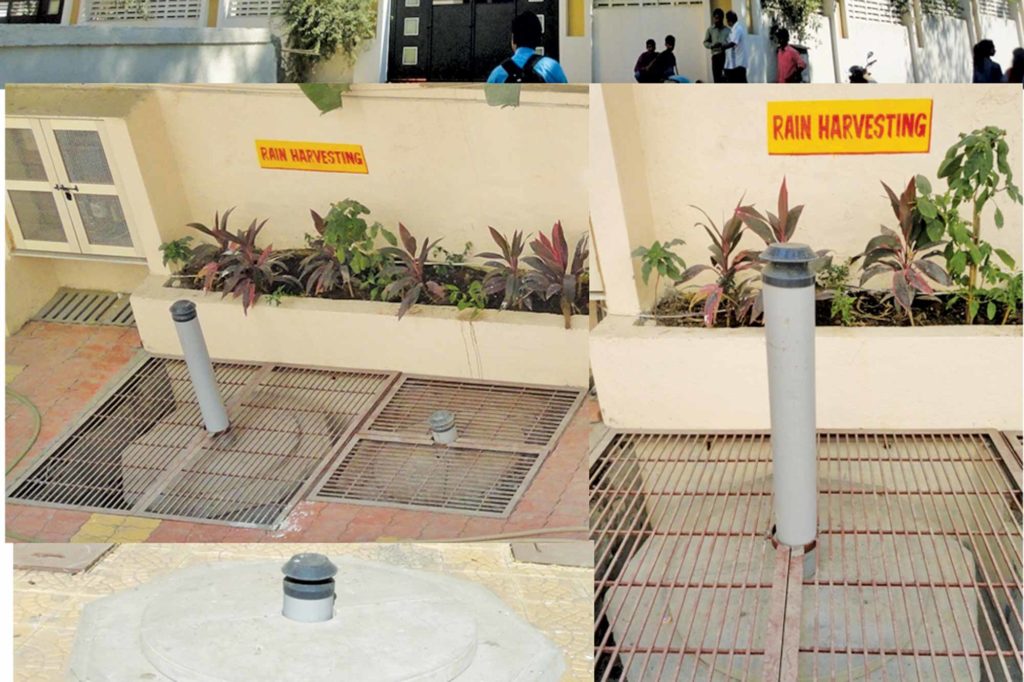In recent years indiscriminate use of water resources for irrigation, industrial and other forms of commercial usage has been under fast depletion. Rapid urbanisation has drastically reduced the exposed soil covered area, which prevents infiltration of rain to replenish the ground water resources. This being the reason, ground water table is depleting in most of the areas.
Rain is the prime source of water. When one discusses about water conservation one cannot help but discuss rainwater conservation or rainwater harvesting (RWH) for centuries worldwide over and have to assess its potential in solving present day water supply or water source problems.
Cities like Mumbai and many others depend on centralised water supply systems i.e. water gets stored in the dams which are far away from the cities (100 to 150 km.), water is transmitted through pipe lines to the cities by using gravity and or pumping, which involves consumption of electricity which leads to huge financial burden on the civic authorities.
On account of length of the pipe line being laid for larger distance having several leakages in the network, leads to 40 to 50 per cent wastage and contamination of water. Also increased rate of migrating population towards the city areas is another cause of increase in water demand day by day.
To fulfill this increasing water demand in Mumbai one needs to work strategically considering available resources which can be best utilised as effective water management system in the city.
One needs to work on the solution which will work effectively with cost effectiveness too. People in Mumbai are supplied with water being charged at subsidised rates. Hence the alternative should not be cost extensive. Presently the alternate source of water supply to meet the shortfall is nothing but tanker water and ground water.
Water supplied through tanker is almost 8 to 10 times costlier than municipal water supply, on the other hand quality and quantity of tanker water is also not assured. Rain water harvesting (RWH) is an effective water management solution to overcome water shortage in Mumbai.
Rain water harvesting is an effective water management system designed to fulfill water needs by collecting rain water whenever; wherever it falls. Utilising rain water during monsoon period and recharging the available surplus rain water in to ground water sources (like bore wells) to make them sustainable throughout the year. The main objective of rain water harvesting project in urban areas should be to fulfill secondary water requirements like toilet flushing, gardening, car washing etc. Water made available through rain water harvesting system installed in buildings can fulfill such secondary water requirement throughout the year. Rain water harvesting projects are an effective solution on total water management thereby enabling people and organisations to become self-sufficient of their water requirements.
In urban context designing of any rain water harvesting project can be done by two types either roof top rain water harvesting or surface runoff water harvesting. Generally in the apartments or buildings up to 8 storeys, water is collected only from roof terrace area becomes sufficient where as the buildings taller than 8 storyes may require to collect roof top rain water as well as surface run off i.e. rain water falling on the ground level from open spaces around the building. However roof top rain water harvesting proves to be comparatively easy, reliable and cost effective design in Mumbai.
Surface run off water harvesting essentially needs primary and secondary filtration including system for removal of oil and grease which is likely to be present in the water collected from storm water drain (SWD) around the building.
One can easily workout the potential of rain water harvesting project by a simple formula i.e.
catchment area multiply by average annual rainfall (2500 mm in Mumbai) multiply by run off coefficient i.e. 0.8 for flat roof terraces.
Need of rain water harvesting in cities
All though 70 per cent of earth surface is covered with water, less than 1 per cent of the world’s available fresh water is accessible for human use. Extensive usage of ground water by people in cities as well as rural part is leading in depletion of ground water in the many parts of the country.
It is observed that most of the cities are not rain poor but water scarce. One of the reasons for this is the existing centralised water supply and distribution system. The stress is given only on development of some individual sources and not on the city as a whole. Hence rain water harvesting is essential for cities as well.
Benefits of rain water harvesting:
• Helps self-sufficiency
• Raises and maintains ground water level
• Improves quality of ground water level
• Reduces soil erosion
• Less expensive and easy to maintain
• Prevents sea water ingression in the coastal areas
• Serves as control measuring for flooding of storm water during monsoon
• Most effective alternative compared to other methods n
Authored by__
Sandeep A. Adhyapak,
Chairman & Managing Director,
Water Field Technologies
Cookie Consent
We use cookies to personalize your experience. By continuing to visit this website you agree to our Terms & Conditions, Privacy Policy and Cookie Policy.


















